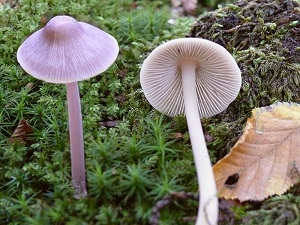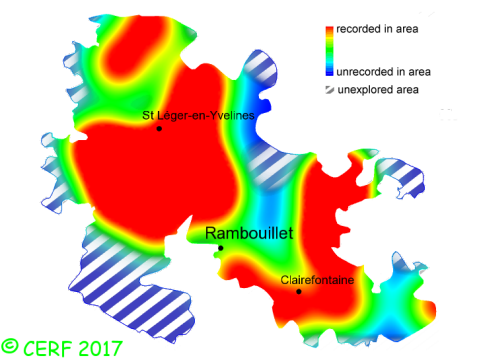| Mycena pura (Pers.Fr.) P. Kumm. |
|
|
|
|
|
|
The cap is pinkish white, violet to lilac, to white, with a central umbo. The cap surface is smooth, not viscid nor sticky. The stem is whitish, without ring. The flesh is whitish to pink, purple grey, unchanging; its taste is acrid, of radish; the odour is sickly, of radish or raw potato; its texture is fibrous. The gills are white with purple or pink shades, adnate to emarginate, distant . The spore print is white. This species is saprophytic. It grows on the ground, in the litter of coniferous or broad-leaved woods, often with beech. The fruiting period takes place from February to March.
Chemical tests : none. Distinctive features : Lilac-pink to blue cap; smell of radish; stem hollow and fragile, with downy base; gills white to pale blue, with their edges without black border Mycena pura is frequent and very widely present in the forest of Rambouillet, and is very frequent, more generally speaking . | ||
|
page updated on 14/01/18

